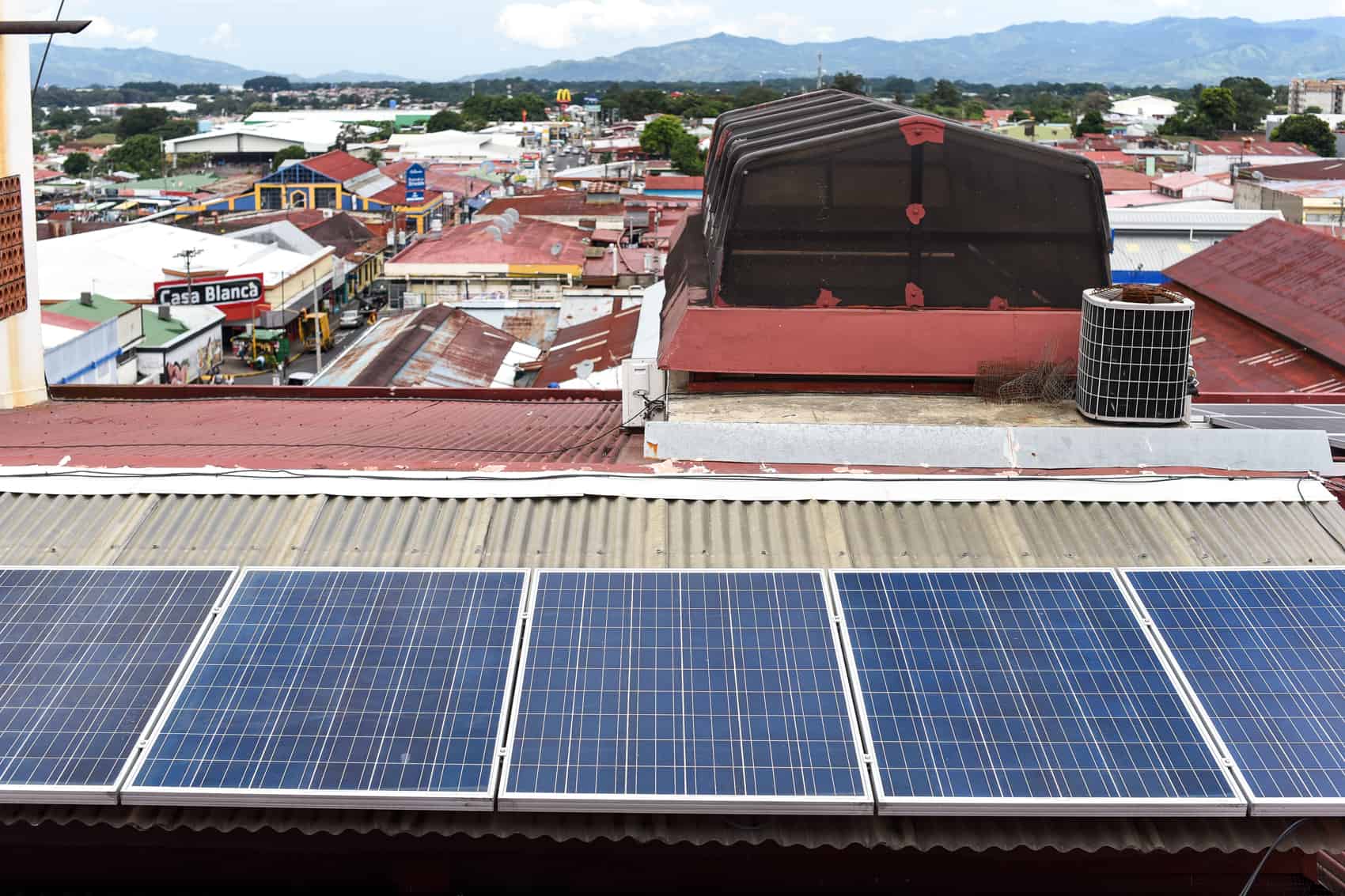The pricing model for net metering, which will enable Costa Rican homes and businesses that generate their own electricity to store surplus in the grid, enters into force on Friday.
Environment and Energy Minister (MINAE) Edgar Gutiérrez announced the launch of the program, which will allow consumers who have solar panels or other renewable energy systems, but who are also connected to the grid, to save even more on monthly bills.
Homes and businesses that produce renewable energy for self-consumption will pay interconnection tariffs approved by the Public Services Regulatory Authority (ARESEP).
All power companies have set their tariffs and are ready to start offering interconnections to the national electricity grid.
Under the new program, customers are authorized to send up to 49 percent of the energy they produce to the grid. They can use that stored energy later.
The program aims to promote the use of renewable energy and reduce monthly bills for consumers. It will also help power companies offset their production, transmission and administrative costs.
MINAE officials said the economic benefits of distributed generation will be mostly noticeable over the long term, as the system does not charge for energy as it is produced, but rather for energy stored in the grid for later use.
The project already has an initial list of some 50 customers of the National Power and Light Company. Most of them are industrial and commercial consumers, which already have approved feasibility studies.
The Costa Rican Electricity Institute also has a list of 300 customers who took part in a pilot project that currently provides 11 megawatts to the national energy system. Among them are state-owned and private companies with installed solar panels, such as the state-owned Banco de Costa Rica, cleaning product manufacturer Florex and Liga Deportiva Alajuelense, which uses solar energy to power its stadium’s lighting system.
Costs
Interconnection tariffs for each kilowatt-hour (kwh) range from ₡11 to ₡29 ($0.02 to $0.05), depending on the power company (see full list below).
Regular users of the electricity grid pay on average ₡90 ($0.17) per kWh, according to ARESEP data.
MINAE officials estimate the full process to connect to the national electricity grid takes two to four weeks.
In order to join the distributed generation program, customers must pay for a technical feasibility study and inspection fees from power companies.
Total costs for the feasibility study and inspections range from ₡60,000 to ₡170,000 ($110 to $313). In addition, each consumer must acquire a two-way meter, which measures energy taken from and sent to the grid, and pay for setup fees. Costs for additional inspections might apply if power companies request them. (See chart below.)
Besides solar, hydro, biomass and wind energy also qualify for the program.
MINAE vice minister Irene Cañas noted that the local market already offers several financing options for acquiring renewable energy systems, therefore she hopes many people soon will be joining the distributed generation program.






